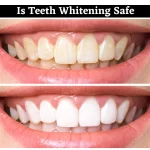Maintaining good oral hygiene by brushing your teeth and flossing regularly is the best way to keep your teeth healthy. Some people though, may end up suffering from tooth decay and cavities despite taking good care of their teeth. This is especially true for children who may not be able to keep every corner of their teeth clean and may have a family history of developing frequent dental cavities.
This is where dental sealants can act as an added safety measure to protect your teeth from decay. Dental sealant is a thin, protective coating of a plastic resin that is applied onto the chewing surface of the teeth. The fissures and grooves on the chewing surfaces can accumulate food debris and plaque, which eventually leads to tooth decay. The dental sealant provides a smooth surface that covers the fissures, protecting it from accumulating plaque and preventing development of cavities.
Who Can Get Dental Sealants?
Both adults and children can receive dental sealants, especially if they are prone to tooth decay. However, the earlier the dental sealant is placed onto your teeth, the more beneficial they can be. Since molars are the most common teeth that are affected by decay and infections, dental sealants are usually placed on the chewing or occlusal surfaces of these teeth.
First permanent molars erupt at around 6 years of age, and second molars at around 12 years. The newly erupted molars of children are not as resistant to decay as adult teeth, and gradually become stronger with age. Application of dental sealant on these newly erupted teeth can help protect them from cavities and prevent unnecessary future treatment costs.
What to Expect in a Dental Sealant Procedure?
Dental sealant application is a very quick and painless procedure that does not require any prior preparation. The dentist will begin by cleaning the surfaces of your teeth and drying them completely. An acid gel is then applied on these surfaces, which will help roughen up the areas that will receive the dental sealant application. The acid gel is rinsed away after a few seconds followed by drying of the surfaces again. The dental sealant is then applied onto the fissures and grooves of the teeth and then cured with an ultraviolet light, which hardens the dental sealant.
Can You Get Dental Sealants if you Have Fillings?
Dental sealants can be placed over healthy teeth to protect them from future decay. They can also be placed over small cavities to prevent the decay from spreading further. Dental sealants are clear and lack any color, which allows for easy monitoring of any potential signs of decay underneath the dental sealant.
However, dental sealants are not placed over fillings. The purpose of a dental filling is to cover and protect those areas of the tooth where the decayed part has been removed by the dentist. Applying dental sealant on top of a dental filling would serve no purpose of preventing further decay of the tooth.
The application of dental sealants does not negate the importance of maintaining good oral hygiene. Regular brushing and flossing habits should be followed even after getting dental sealants, and children in particular, should be explained the importance of the same. Visit Minneapolis Dental to know more about the dental sealant procedure and whether you are a suitable candidate for the same.


















